
Phantasy Star Online is an online role-playing game (RPG) developed by Sonic Team and published by Sega in 2000 for the Dreamcast. It was the first successful online RPG for game consoles; players adventure with up to three others over the internet to complete quests, collect items and fight enemies in real-time action RPG combat. The story is unrelated to previous games in the Phantasy Star series.

Grand Theft Auto III is a 2001 action-adventure game developed by DMA Design and published by Rockstar Games. It is the third main entry in the Grand Theft Auto series, following 1999's Grand Theft Auto 2, and the fifth instalment overall. Set within the fictional Liberty City, the story follows Claude, a silent protagonist who, after being left for dead by his girlfriend during a robbery, embarks on a quest for revenge leading him to become entangled in a world of crime, drugs, gang warfare, and corruption. The game is played from a third-person perspective and its world is navigated on foot or by vehicle. Its open world design lets players freely roam Liberty City, consisting of three main areas.

Frequency is a rhythm video game developed by Harmonix and published by Sony Computer Entertainment for the PlayStation 2. It was the first game to be developed by Harmonix. A sequel, Amplitude, was released in 2003.

Amplitude is a 2003 rhythm video game developed by Harmonix and published by Sony Computer Entertainment for the PlayStation 2. It is the sequel to Frequency (2001).
Wipeout is a series of futuristic anti-gravity racing video games created by Psygnosis. Sony Interactive Entertainment owns the series and publishes most of the games.

EyeToy: Play is a minigame compilation video game developed by London Studio and published by Sony Computer Entertainment for the PlayStation 2. It was the first game to make use of the PlayStation 2's video camera accessory, EyeToy. The game was initially packaged with the EyeToy when the accessory was first released.

The Legend of Zelda: Twilight Princess is a 2006 action-adventure game developed and published by Nintendo for the GameCube and Wii. Originally planned for release exclusively on the GameCube in November 2005, Twilight Princess was delayed by Nintendo to allow its developers to refine the game, add more content, and port it to the Wii. The Wii version was a launch game in North America in November 2006, and in Japan, Europe, and Australia the following month. The GameCube version was released in December 2006 as the final first-party game for the console.

Meteos is a 2005 tile-matching video game developed by Q Entertainment and published by Bandai for the Nintendo DS. It was produced by Q Entertainment founder Tetsuya Mizuguchi and designed by Masahiro Sakurai. Meteos was inspired by the video game Missile Command (1980), the film The Matrix (1999) and the television series 24 (2001-2010).

Jackie Chan Adventures is a video game based upon the animated series of the same name, which focuses on a fictionalized version of Hong Kong action film star Jackie Chan. The Game Boy Advance game, entitled Jackie Chan Adventures: Legend of the Dark Hand, was developed by Torus Games, published by Activision, and released in 2001. The PlayStation 2 version was developed by Atomic Planet Entertainment, published by Sony Pictures Television's sister company, Sony Computer Entertainment, and released on October 1, 2004, in Europe. An Xbox version was also announced but was never released. The latter console version is compatible with the EyeToy. Jackie, Jade, Uncle, Valmont and Shendu were voiced by their original actors.
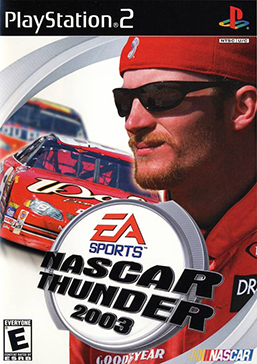
NASCAR Thunder 2003 is the sixth edition of the EA Sports' NASCAR racing simulator series. Developed by EA Tiburon and Budcat Creations and published by EA Sports. It was released for PlayStation, PlayStation 2, GameCube, and Xbox on September 18, 2002, and for Microsoft Windows on October 21. The product features Dale Earnhardt Jr. on the cover. It was the first time the NASCAR's Most Popular Driver Award recipient was featured on the cover, although he did not win the award for the first time until the following year. Dale Earnhardt appeared in the game as a driver as a result of entering his name as a Create-A-Car driver's name; he did not appear in the previous game due to his death. He appeared as a legend in subsequent games.

TrickStyle is a futuristic racing video game developed by Criterion Games and published by Acclaim Entertainment for the Dreamcast and Microsoft Windows. Set in the future, the player takes part in stunt-filled hoverboard races through London, Tokyo, and Manhattan, or inside a massive arena called the Velodrome. AirBlade by Criterion and Namco is a spiritual successor. The game received mixed reviews from critics, who praised its graphics and physics, but criticized its gameplay, animations and sound.

ESPN NFL 2K5 is an American football video game developed by Visual Concepts for the PlayStation 2 and Xbox consoles. Co-Published by Global Star Software and Sega, it is the sixth installment of the NFL 2K series and the last to use official NFL licensing. Gameplay is presented as a live ESPN television broadcast and features the voices and digital likenesses of multiple ESPN on-air personalities.
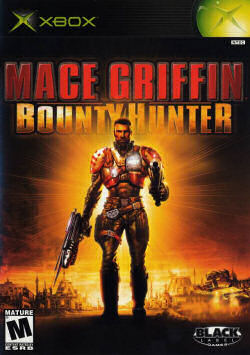
Mace Griffin: Bounty Hunter is a first-person shooter video game developed by Warthog Games, published by Black Label Games and released for the PlayStation 2, Xbox and Microsoft Windows. A GameCube version was in development, but was cancelled.
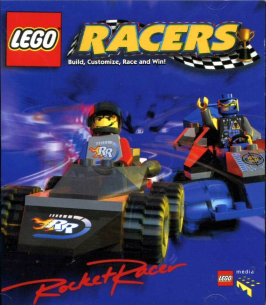
Lego Racers is a 1999 Lego-themed kart racing video game developed by High Voltage Software and published by Lego Media for Microsoft Windows, followed by console ports to Nintendo 64 and PlayStation. Set in the fictional "Legoland" universe, the single-player mode follows various minifigure characters competing in a racing competition created by a fictional racing champion called Rocket Racer.
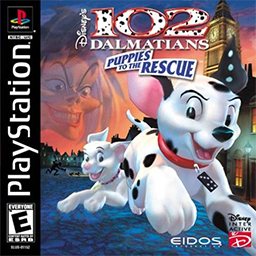
102 Dalmatians: Puppies to the Rescue is a 2000 platform game loosely based on the 2000 film 102 Dalmatians. It was developed by Toys for Bob and published by Eidos Interactive for PlayStation and Dreamcast, while Disney Interactive published the Windows version. The Game Boy Color version was developed by Digital Eclipse and published by Activision.
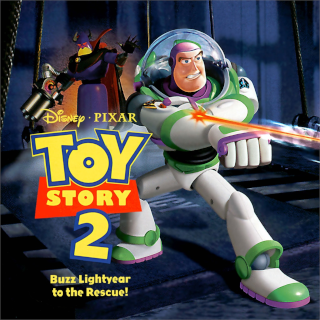
Toy Story 2: Buzz Lightyear to the Rescue is a 1999 platform game developed by Traveller's Tales and published by Activision and Disney Interactive. Based on Disney/Pixar's 1999 computer animated film Toy Story 2, it was released for the Nintendo 64, PlayStation, Microsoft Windows, and Macintosh in late 1999, while a Dreamcast version followed in 2000. The computer versions were released under the title Disney/Pixar's Action Game, Toy Story 2. A different version, a side-scrolling platform game titled Toy Story 2, was also released for the Game Boy Color in 1999.
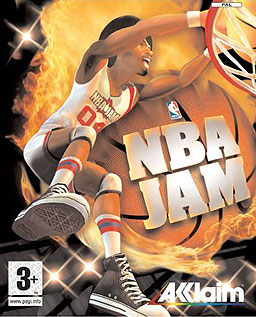
NBA Jam is a 3-on-3 basketball video game published by Acclaim Entertainment for the PlayStation 2 and Xbox in 2003. It is part of the NBA Jam series. The game was announced on May 12, 2003. The play-by-play is voiced by Tim Kitzrow. There was also originally to be a GameCube version of the game.

Toy Story Racer is a 2001 kart racing game developed by Traveller's Tales and Tiertex Design Studios and published by Activision. It was based on the Toy Story franchise, primarily the first film. The game was released in March 2001 for the Game Boy Color and PlayStation systems. The PlayStation version received "generally favorable reviews" according to Metacritic. In 2010, the PlayStation version was re-released on the PlayStation Store as a PS one Classic.

Ape Escape is a 1999 platform game developed and published by Sony Computer Entertainment for the PlayStation. The first game in the Ape Escape series, the game tells the story of an ape named Specter who gains enhanced intelligence and a malevolent streak through the use of an experimental helmet. Specter produces an army of apes, which he sends through time in an attempt to rewrite history. Spike, the player character, sets out to capture the apes with the aid of special gadgets.



















